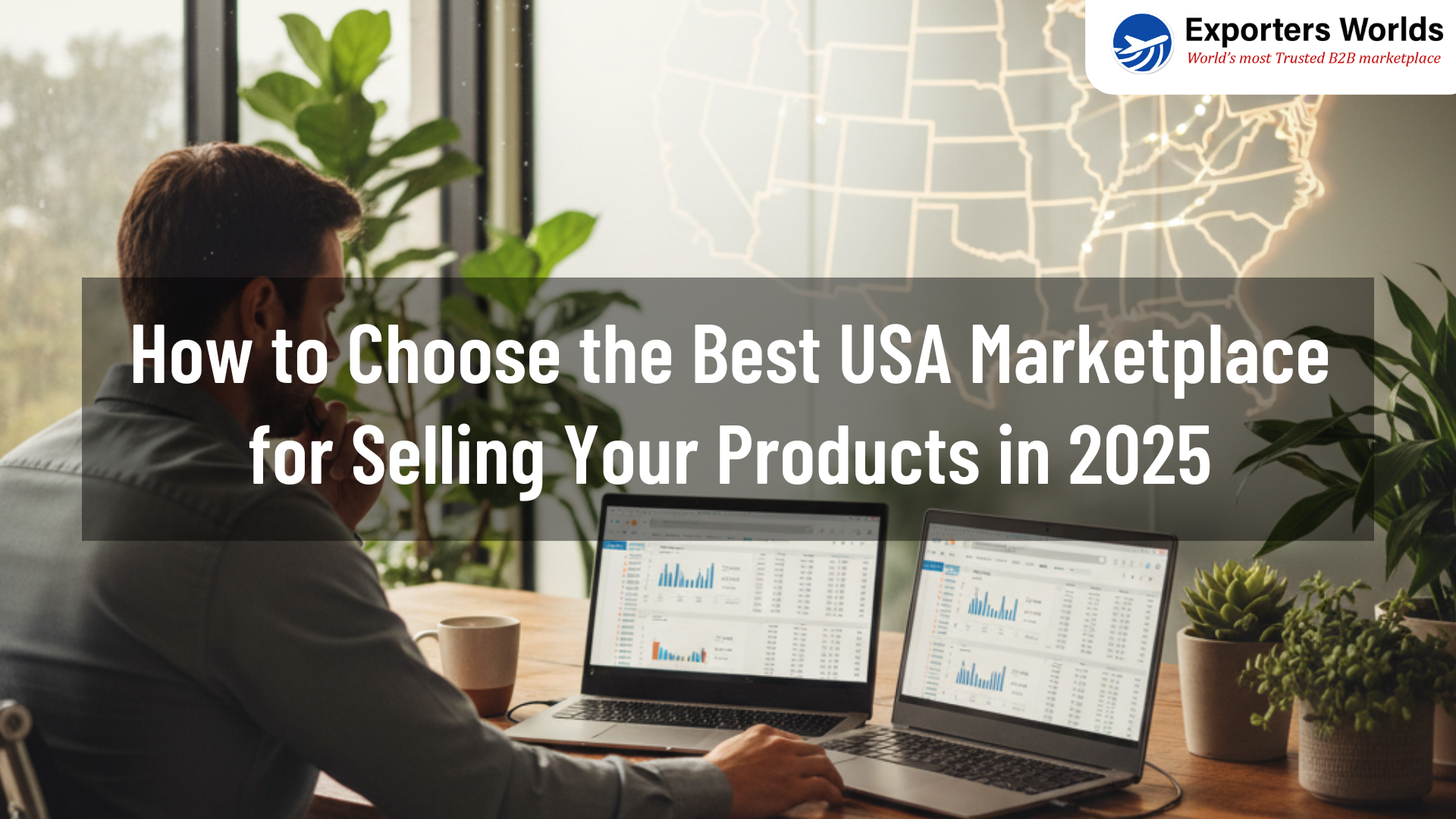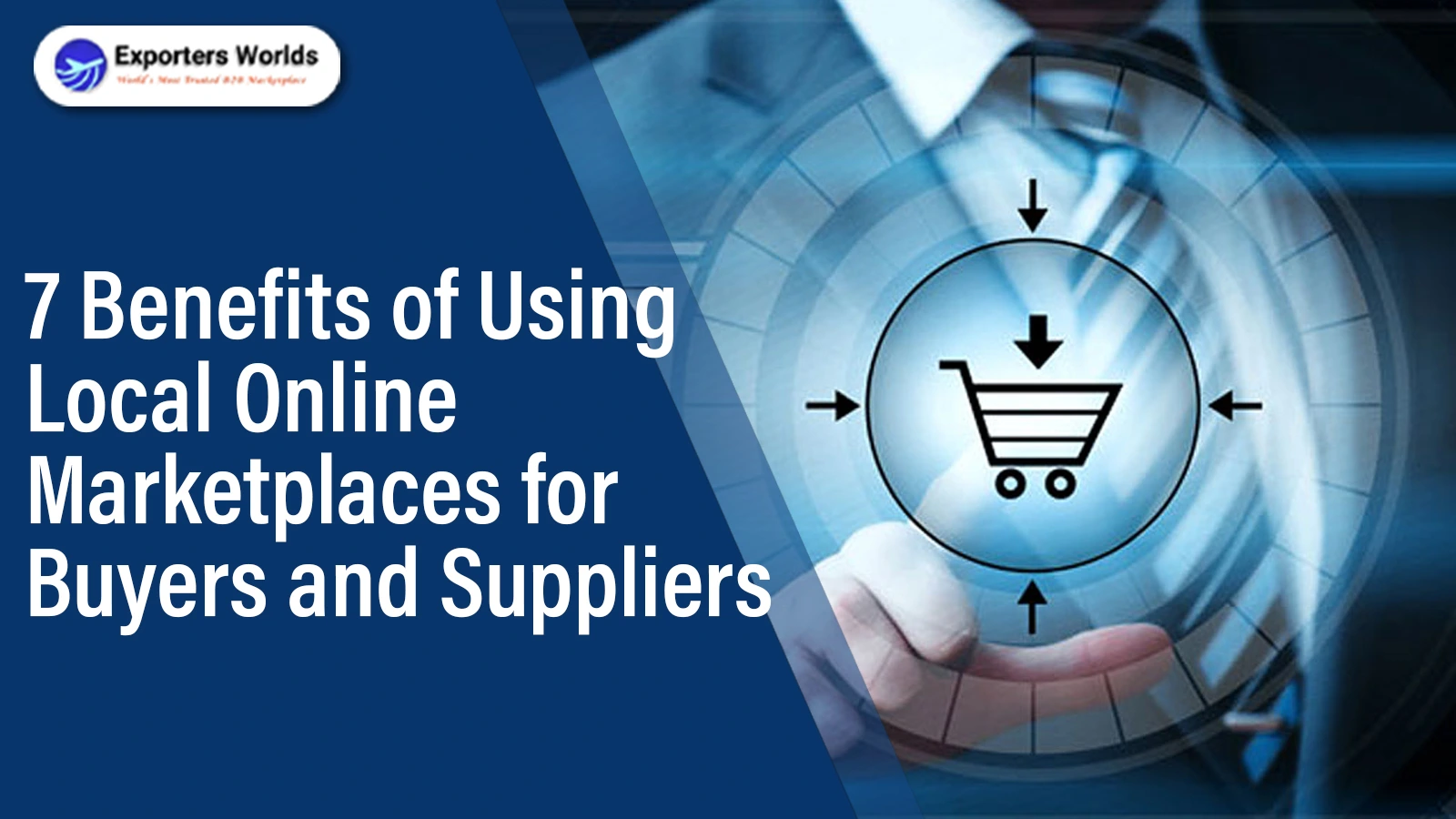How to Choose the Best USA Marketplace for Selling Your Products in 2025

Expanding your business into the United States marketplace in 2025 isn’t just about listing products online—it’s about strategy, credibility, and understanding a complex, competitive ecosystem. Millions of active buyers and billions in annual e-commerce transactions make the USA online marketplace a high-potential growth avenue for global sellers.
But here’s the reality: the wrong platform can waste time, money, and momentum. The right one can maximize profits, enhance visibility, and build long-term credibility. Before considering global alternatives, it’s crucial to understand the core elements that make a US marketplace successful for your product.
Why Selling on a USA Marketplace Matters
The United States has one of the largest e-commerce ecosystems in the world. Here’s why focusing on US marketplaces first is critical:
-
Access to a vast audience – With over 300 million active online shoppers, the potential for growth is enormous. Understanding which platforms attract your target buyers ensures your products reach the right people.
-
Streamlined logistics and payment systems – Platforms like Amazon and Walmart manage shipping, returns, and secure payment processes, allowing sellers to focus on product quality, marketing, and customer engagement.
-
Analytics for informed decision-making – Advanced dashboards track traffic, conversion rates, and trends. Sellers who understand these insights can optimize listings, pricing, and marketing strategies.
-
Enhanced credibility – US marketplaces are trusted globally. Selling on recognized platforms instantly increases consumer confidence and can positively impact future B2B partnerships.
By understanding these advantages, sellers can plan effectively and avoid costly mistakes when entering international markets.
How to Choose the Best USA Marketplace: Step-by-Step Guide
Here’s a detailed, explanatory roadmap to select the right marketplace for your products:
Step 1: Define Your Product & Target Audience
Knowing your product and audience is the foundation of marketplace success.
-
Consumer vs B2B: Consumer products often perform best on Amazon, Etsy, or Walmart, whereas bulk industrial products do better on B2B portals like ThomasNet or specialized USA B2B networks.
-
Niche vs mass-market: Niche products might thrive on Etsy or smaller specialized portals, while mass-market items perform better on Amazon or Walmart.
-
Buyer demographics: Age, income, location, and purchasing habits influence where and how your products should be listed.
Why it matters: Choosing the wrong marketplace for your product type can lead to poor visibility, low sales, and wasted marketing spend.
Step 2: Compare Leading USA Marketplaces
Different marketplaces cater to different business models and audiences:
-
Amazon: Ideal for scalable, high-volume consumer goods with FBA fulfillment support.
-
eBay: Flexible for unique, collectible, or refurbished products.
-
Walmart Marketplace: Offers retail credibility and exposure to a loyal shopper base.
-
Etsy: Specialized for handmade, artisanal, or niche offerings.
-
B2B portals (ThomasNet, India-origin B2B portals): Target bulk buyers and industrial products.
Explanation: Not every platform fits every product. Evaluating platform features, audience demographics, and competition helps ensure your listings are effective.
Step 3: Review Fees, Logistics, and Support
Marketplace costs and services vary, and understanding them is essential:
-
Fees: Commission, listing, or subscription fees affect profit margins. Choose a platform that balances cost with exposure.
-
Fulfillment: Platforms like Amazon FBA handle shipping, while others require self-fulfillment. Assess your capacity to manage logistics.
-
Support: Reliable platforms offer seller assistance for disputes, refunds, and account management.
Tip: Factor fees and logistics into pricing and profit calculations before listing your products.
Step 4: Evaluate Buyer Base & Market Potential
A platform is only as good as its buyers:
-
Active traffic: High visitor numbers increase visibility and sales chances.
-
Category competition: High competition requires stronger differentiation or marketing efforts.
-
Demand trends: Seasonal spikes or emerging trends can impact sales.
Why this step matters: Even on a high-traffic platform, listing a product with minimal demand can lead to wasted effort.
Step 5: Understand Policies & Compliance
Compliance is non-negotiable in cross-border trade:
-
Product safety: FDA, FCC, or CPSC regulations may apply depending on your category.
-
Import/export documentation: Incorrect paperwork can result in delays or penalties.
-
Returns and dispute policies: Understanding rules prevents account suspension and maintains buyer trust.
Tip: Platforms like Exporters Worlds provide guidance on compliance, making international trade smoother and less risky.
Step 6: Utilize Tools for Marketing & Analytics
Marketing tools and analytics are crucial for sustained growth:
-
Promotions and advertising: Boost visibility and conversions through paid campaigns or platform-specific promotions.
-
Analytics dashboards: Monitor traffic, sales, and engagement to refine strategies.
-
Integration tools: Link inventory, shipping, and accounting systems for efficient operations.
Insight: Sellers who leverage these tools make informed, data-driven decisions that increase ROI.
Step 7: Pilot, Measure, and Optimize
Start small and scale:
-
Launch with a few products across chosen US marketplaces.
-
Monitor performance metrics: conversion rate, buyer feedback, and order volume.
-
Adjust pricing, listings, and marketing based on real-world data before expanding.
Why it works: Iterative testing reduces risk, optimizes performance, and builds confidence in market decisions.
Exporters Worlds as a Complementary Global Marketplace
Once sellers understand the US landscape, Exporters Worlds can serve as a trusted international B2B marketplace:
-
Verified global buyers: Including US-based and other international businesses.
-
Exposure to new markets: Safely test products internationally alongside US marketplaces.
-
End-to-end trade support: Documentation, compliance guidance, and negotiation assistance.
-
Digital marketing & analytics tools: Optimize product listings, track engagement, and identify trends.
Strategy insight: Using Exporters Worlds in tandem with US marketplaces allows sellers to balance local visibility with global verification, minimizing risk and maximizing cross-border growth.
Case Study: Dual Marketplace Success
A mid-sized Indian home décor brand applied a dual-market strategy:
-
Phase 1: Listed on Amazon and Etsy while testing products on Exporters Worlds.
-
Phase 2: Within 6 months, international sales grew 50% due to verified buyers and cross-platform insights.
-
Phase 3: Expanded bulk orders via Exporters Worlds while maintaining strong US marketplace performance.
Lesson: A complementary marketplace strategy allows safe, scalable, and profitable international expansion.
Recent Trends & Statistics (2025)
-
US e-commerce sales are expected to exceed $1.1 trillion; global B2B e-commerce surpasses $1.3 trillion.
-
Mobile commerce accounts for 54% of online purchases in the US.
-
AI-driven product recommendations influence over 40% of online purchases.
Interesting Facts:
-
Amazon captures 38% of US e-commerce sales.
-
60% of buyers begin product research directly on marketplaces.
-
Verified B2B platforms like Exporters Worlds double international growth rates.
-
Cross-border trade from India to the US grew 25% year-on-year in 2024.
-
Sellers using integrated analytics see 15–30% higher conversions.
Closing Thoughts
Choosing the right USA marketplace requires research, strategy, and credibility. Starting with US marketplaces ensures visibility and market validation. Adding Exporters Worlds later in the strategy introduces a verified, international B2B network, providing safety, scalability, and global reach.
By adopting a dual-market approach, sellers can reduce risk, optimize performance, and achieve sustainable growth—both in the US and internationally.
Your journey to successful cross-border trade starts with informed decisions, credible marketplaces, and actionable strategies for 2025 and beyond.




